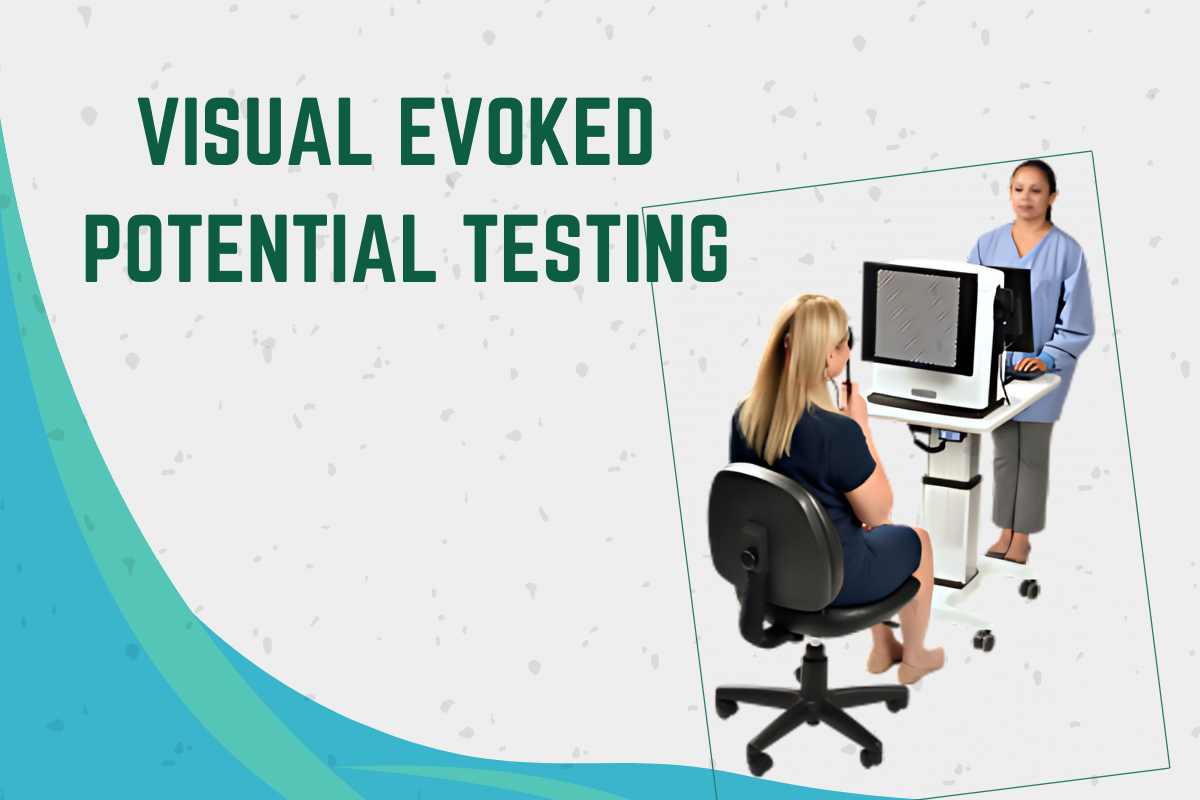VISUAL EVOKED POTENTIAL (VEP) TESTING
Visual stimuli used in VEP testing are strobe flash, flashing light-emitting diodes (LEDs), transient and steady state pattern reversal and pattern onset/offset. The most common stimulus used is a checkerboard pattern, which reverses every half-second. The VEP is used to identify impaired transmission along the optic nerve pathways, which is a common early finding in MS, even in some patients who have never experienced any visual symptoms. It is used to detect problems with the conducting nerves and areas of the brain involved in vision in cases of optic neuritis, occipital trauma, or neurofibromatosis, etc.
BRAINSTEM AUDITORY EVOKED POTENTIAL (BAEP) TESTING
- In BAEP testing, broad-band clicks as stimuli are used for the neurologic applications of auditory evoked potentials. BAEPs reflect neuronal activity in the auditory nerve, cochlear nucleus, superior olive, and inferior colliculus of the brainstem. Abnormal test results may be a sign of hearing loss, multiple sclerosis, acoustic neuroma, brainstem stroke, or brainstem degenerative disorders, etc. BAEP testing may also be used for outcome prediction in cases of coma.



